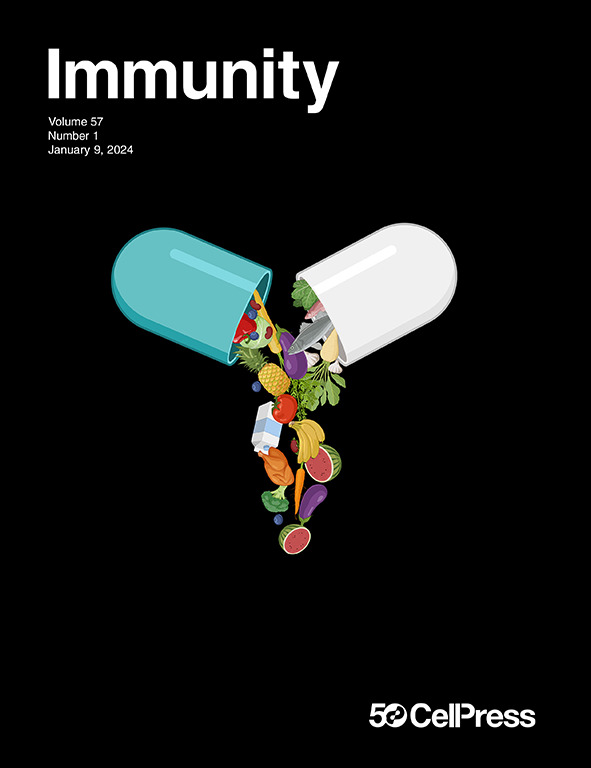CINTER-seq: Chemical profiling reveals interaction-dependent cell landscapes and gene signatures in vivo
IF 25.5
1区 医学
Q1 IMMUNOLOGY
引用次数: 0
Abstract
Physical interactions between cells are essential for physiological functions, yet the in situ cellular interactome remains largely unexplored. In this study, we developed a photocatalytic chemistry to capture targeted physically interacting cells in living mice. Furthermore, we introduce sequencing of the cellular interactome (CINTER-seq), a quantitative approach for multiplexed indexing of the captured cellular interactome, enabled by the simultaneous ex situ sequencing of multidimensional parameters. Using this system, we have revealed interaction-dependent gene signatures of immune cells in vivo, providing molecular insights into their interactions. Notably, we find that the immune checkpoint lymphocyte-activation gene 3 (LAG3) can mediate stable T cell-antigen-presenting cell (APC) contacts only by interacting with major histocompatibility complex class II (MHC class II) molecules, while neutrophils are strongly activated through interactions with tumor cells to adopt a pro-tumor phenotype in an interaction-dependent manner. These results underscore the potential of the CINTER-seq platform to make in vivo cellular interactome decoding routines in future studies.

CINTER-seq:化学分析揭示相互作用依赖的细胞景观和基因特征在体内
细胞间的物理相互作用对于生理功能是必不可少的,然而原位细胞相互作用组在很大程度上仍未被探索。在这项研究中,我们开发了一种光催化化学方法来捕获活体小鼠中有针对性的物理相互作用细胞。此外,我们介绍了细胞相互作用组的测序(CINTER-seq),这是一种定量方法,用于捕获的细胞相互作用组的多路索引,通过同时对多维参数进行非原位测序。利用该系统,我们已经揭示了体内免疫细胞相互作用依赖的基因特征,为它们的相互作用提供了分子见解。值得注意的是,我们发现免疫检查点淋巴细胞激活基因3 (LAG3)仅通过与主要组织相容性复合体II类(MHC II类)分子相互作用才能介导稳定的T细胞-抗原呈递细胞(APC)接触,而中性粒细胞通过与肿瘤细胞相互作用而被强烈激活,以相互作用依赖的方式采取促肿瘤表型。这些结果强调了CINTER-seq平台在未来研究中进行体内细胞相互作用组解码程序的潜力。
本文章由计算机程序翻译,如有差异,请以英文原文为准。
求助全文
约1分钟内获得全文
求助全文
来源期刊

Immunity
医学-免疫学
CiteScore
49.40
自引率
2.20%
发文量
205
审稿时长
6 months
期刊介绍:
Immunity is a publication that focuses on publishing significant advancements in research related to immunology. We encourage the submission of studies that offer groundbreaking immunological discoveries, whether at the molecular, cellular, or whole organism level. Topics of interest encompass a wide range, such as cancer, infectious diseases, neuroimmunology, autoimmune diseases, allergies, mucosal immunity, metabolic diseases, and homeostasis.
 求助内容:
求助内容: 应助结果提醒方式:
应助结果提醒方式:


